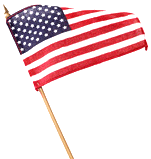
|
|
|||
 |
 |
||
 |
|
||||||
|
|
|
|
||||||||||
|
Jacqueline
Kennedy: The White House Years
By Karen Sue Smith
|
|||||||||||
| Who
would have thought it? Instead of the paintings of the English
master William Blake, the blockbuster exhibit at New York’s
Metropolitan Museum has turned out to be a selection of day dresses
and evening gowns, the “official wardrobe,” worn by the former
First Lady. Hamish Bowles, the Vogue editor who organized the
show, must be delighted. |
||||||||||||
|
Today, many of the clothes women everywhere once wanted to imitate look a bit dated, even homespun with their wide hems, oversized buttons, and square, tailored look. But the photographs and videos show just how different these very garments appear when worn by Jackie herself. It is she, full of vitality, agility, and youth, who brings these clothes to life. Given her tall, slim, and rather flat figure, her long neck and broad shoulders, she wore to maximum effect coats and jackets shaped like boxes and sleeveless A-line shifts. Her nut-brown hair contrasted well with bright colors (the palette she chose for her trip to India and Pakistan) as well as beige and white, the colors of her inaugural ensemble. On that cold day in January 1961, the new president’s wife dazzled Washington by wearing an off-white coat and matching pillbox hat, accented by a sable muff and sable-trimmed high-heeled boots. She stood out appropriately against the sea of “bears,” those hundreds of Congressional wives all dressed in full-length furs. The understated elegance of the “Jackie look” included one other signature touch, white gloves, which she wore religiously, even atop an elephant in India. |
|||||||||||
 |
||||||||||||
|
The eeriest part of the exhibit, however (which, after July 29, returns to the Kennedy Library in Boston), is that we look upon the First Family at the pinnacle of their lives, unaware of what is about to happen to them. Yet we know it. I saw no blood-stained dress mentioned in this exhibit, nor is the funeral dress on view—two glaring omissions. Consequently, the icon appears thinly drawn, more of a caricature than a portrait of the woman whose grace in the face of violence and grief would hold together a mourning nation, until the mantle of leadership could be passed. |
|||||||||||
| When in New York, you can use your Bankard MasterCard, Bankard Visa or Bankard JCB. | ||||||||||||
 |
||